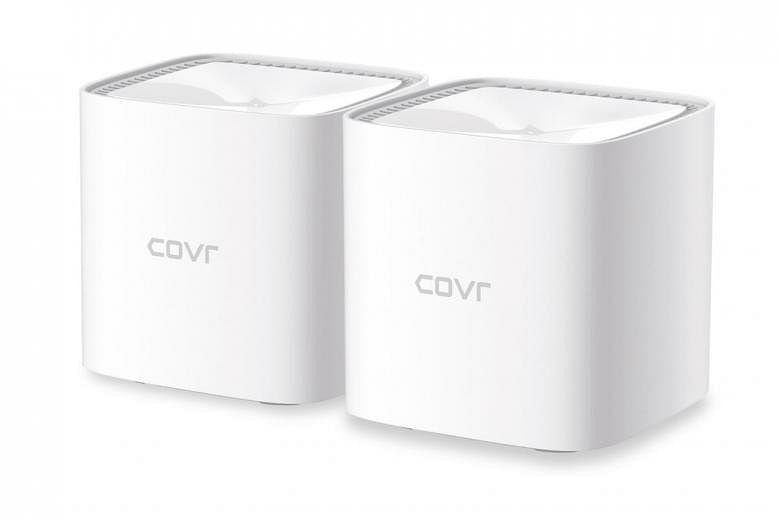Mesh routers, which extend Wi-Fi coverage through the use of multiple wireless nodes, typically work only with similar models from the same manufacturer.
This lack of interoperability between different brands means consumers are often locked into a manufacturer's product ecosystem.
The thing though, is that there has been a networking standard for mesh routers around since 2018 that is aimed at alleviating this issue.
Dubbed EasyMesh, it was created by the Wi-Fi Alliance, the industry body responsible for certifying Wi-Fi products.
An EasyMesh-certified device will work with other EasyMesh devices, regardless of the manufacturer.
The standard has seen few takers. However, things seem to be looking up recently with networking firm D-Link launching one of the first EasyMesh-certified routers in the market this month.
Priced at $159 for a set of two identical units, the D-Link Covr AC1200 dual-band whole home mesh Wi-Fi system (or Covr-1100 for short) is an entry-level model.
It sports two wireless bands - a 2.4GHz wireless band and a 5GHz one that top out at 300Mbps and 867Mbps, respectively.
The Covr-1100 uses the older Wi-Fi 5 (or 802.11ac) protocol instead of the newer Wi-Fi 6 standard.
On the bright side, the Covr-1100 comes with the latest WPA3 security standard, which is an improvement over its WPA2 predecessor in several ways. Notably, WPA3 can prevent hackers from guessing the Wi-Fi password through brute force.
Each Covr-1100 unit is compact enough to fit in my palm. It has a small LED status indicator at the top and two Gigabit Ethernet ports at the rear.
Unlike higher-end models, the Covr-1100 lacks a dedicated wireless band for communication between nodes, known as wireless backhaul.
But a wired backhaul, which similarly improves the wireless performance, can be created by connecting Covr-1100 units via their Ethernet ports.
I do not encounter any issues setting up the Covr-1100 router. All I have to do is scan a QR code using the D-Link Wi-Fi app (available for iOS and Android) and follow the instructions.
The app offers fewer settings than the Web-based router interface, but it should suffice for basic tasks such as setting parental controls for specific devices or enabling the guest Wi-Fi network.
Those who have Amazon Alexa or Google Assistant smart speakers can also use voice commands to order the Covr-1100 to perform a handful of tasks, such as rebooting the router. But this feature is more gimmicky than useful.
Given its entry-level pricing, I do not have high expectations for the Covr-1100's performance. Still, I am disappointed by the router's download speeds.
In my usual speed test involving data transfers between two laptops, the Covr-1100 produces an average speed of 275Mbps compared with the 300 to 400Mbps I have seen on other affordable mesh routers.
When one of the test laptops is moved to a distant bedroom, the download speed drops to 91Mbps, which is in line with expectations.
Overall, the Covr-1100 performs adequately. It does not have the fastest performance, but my Wi-Fi connection is stable and its support for the latest WPA3 security standard is reassuring.
FOR
Small and compact
Affordable
Supports latest WPA3 security standard
AGAINST
Middling speed
No Wi-Fi 6 support
SPECS
PRICE: $159
ETHERNET INTERFACE: 1 x Gigabit LAN ports, 1 x Gigabit WAN port
STANDARDS: 802.11a/b/g/n/ac
SECURITY: WPA2-PSK, WPA3
ADVANCED FIREWALL FEATURES: NAT and SPI
RATING
FEATURES: 3.5/5
DESIGN: 3.5/5
PERFORMANCE: 3/5
VALUE FOR MONEY: 4/5
OVERALL: 3.5/5


